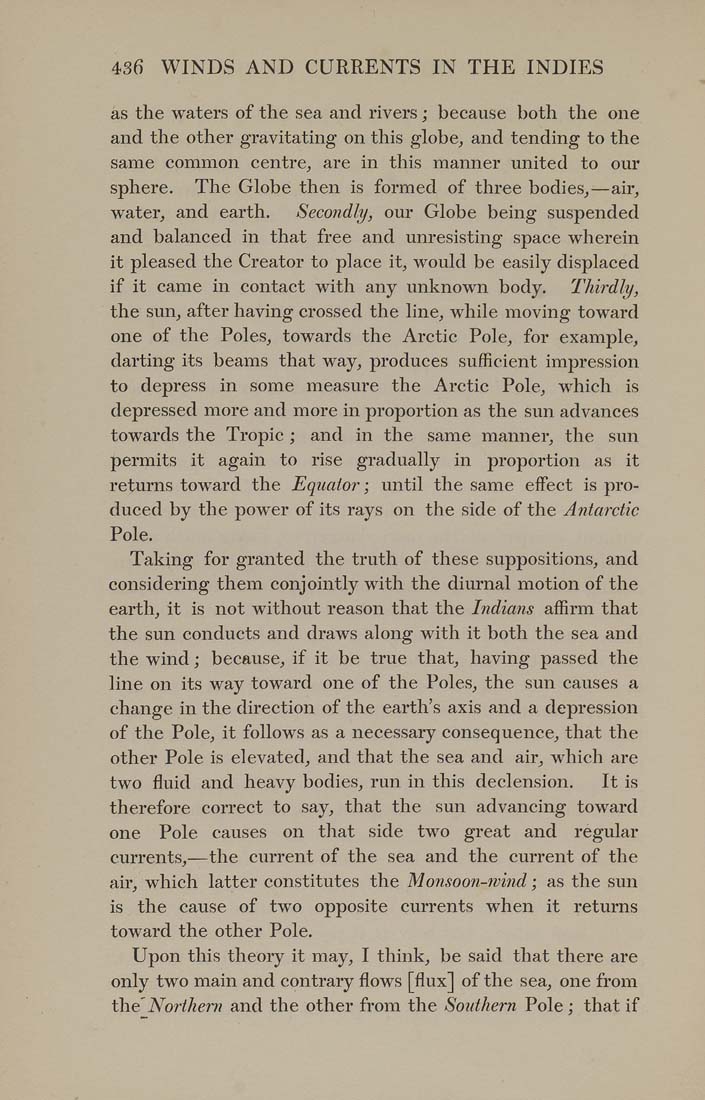436 WINDS AND CURRENTS IN THE INDIES
as the waters of the sea and rivers; because both the one
and the other gravitating on this globe, and tending to the
same common centre, are in this manner united to our
sphere. The Globe then is formed of three bodies,—air,
water, and earth. Secondly, our Globe being suspended
and balanced in that free and unresisting space wherein
it pleased the Creator to place it, would be easily displaced
if it came in contact with any unknown body. Thirdly,
the sun, after having crossed the line, while moving toward
one of the Poles, towards the Arctic Pole, for example,
darting its beams that way, produces sufficient impression
to depress in some measure the Arctic Pole, which is
depressed more and more in proportion as the sun advances
towards the Tropic ; and in the same manner, the sun
permits it again to rise gradually in proportion as it
returns toward the Equator; until the same effect is pro¬
duced by the power of its rays on the side of the Antarctic
Pole.
Taking for granted the truth of these suppositions, and
considering them conjointly with the diurnal motion of the
earth, it is not without reason that the Indians affirm that
the sun conducts and draws along with it both the sea and
the wind; because, if it be true that, having passed the
line on its way toward one of the Poles, the sun causes a
change in the direction of the earth's axis and a depression
of the Pole, it follows as a necessary consequence, that the
other Pole is elevated, and that the sea and air, which are
two fluid and heavy bodies, run in this declension. It is
therefore correct to say, that the sun advancing toward
one Pole causes on that side two great and regular
currents,—the current of the sea and the current of the
air, which latter constitutes the Monsoon-wind; as the sun
is the cause of two opposite currents when it returns
toward the other Pole.
Upon this theory it may, I think, be said that there are
only two main and contraiy flows [flux] of the sea, one from
the Northern and the other from the Southern Pole; that if
|








